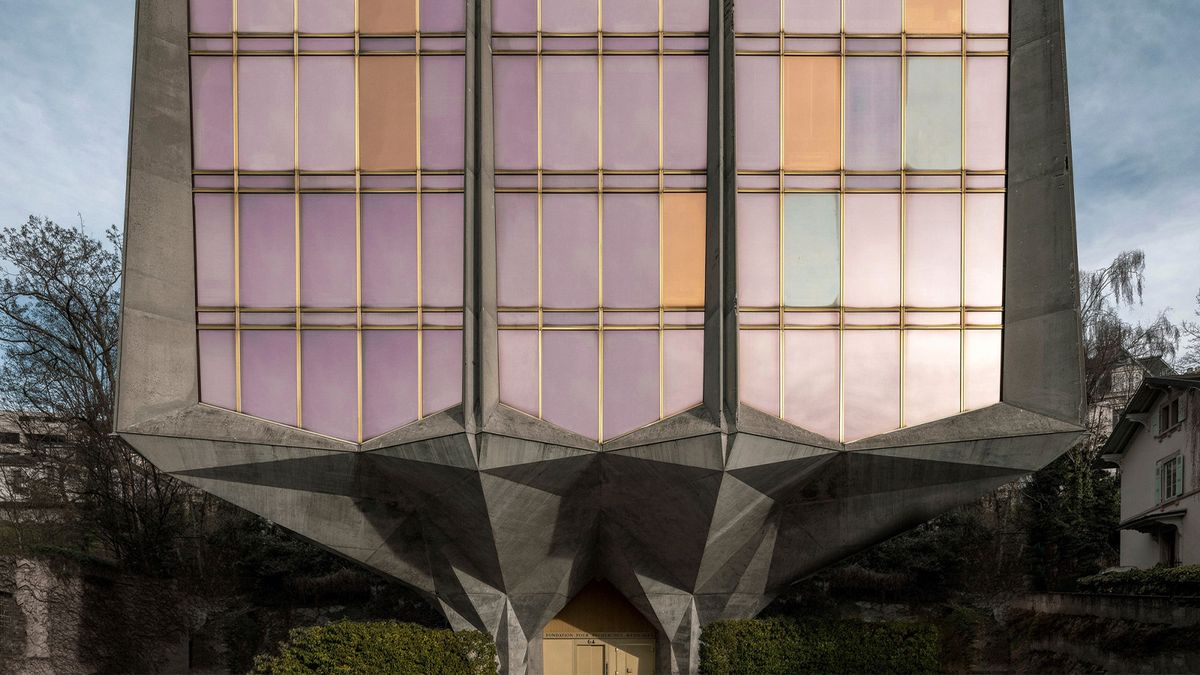Tate Britain is hosting an expansive survey of more than 90 works by legendary British artist Cornelia Parker, spanning from the 1980s – 2022. On view until 16 October 2022, the show debuts new video and sculptural works Flag, 2022, and Island, 2022, which are staged alongside some of the artist’s most recognisable sculptures and installations.
The wall text accompanying each piece is sprinkled with Parker’s first-person reflections, providing insight into the story and context behind each work. In her narration, we see Parker draw alternative meanings from the ordinary. Prison Wall Abstract (A Man Escaped), 2012 – 13 brings us through a daily walk, where Parker extracts art from the everyday in prison-wall cracks, and her News at… 2017 series, which sees children scrawl newspaper headlines of ‘Theresa Maybe’ and ‘Trump Spreading Social Poison’ on chalkboards.
Cornelia Parker, Avoided Object Photographs taken on the sky above the Imperial War Museum with the camera that belonged to Hoess, commandant of Auschwitz, 1999. Courtesy the artist and Frith Street Gallery, London © Cornelia Parker. Photography: © Anne-Katrin Purkiss. All Rights Reserved, DACS/Artimage 2022
Parker sees art in the underside of things. She highlights awkward objects and ugly mishaps, transforming them into abstract images of colourfully taped backs of signs and pools of spilt milk on the pavement. In Black Path (Bunhill Fields), 2013, she takes a bronze cast of the gaps between paving stones and elevates it inches above the ground, creating a striking structure. Familiar shadows are cast on the floor below the hovering hopscotch, creating an emblem devoid of function.
Cornelia Parker, War Room, 2015. © Anne - Katrin Purkiss. All Rights Reserved, DACS/Artimage. 2022 Image © the Whitworth, the University of Manchester. Photography by Michael Pollard
Stolen Thunder, 1997 – 98 introduces us to Parker’s more satirical side. Presenting cloth bearing the tarnish from Henry VIII’s armour, Charles Dickens’ teaspoon and Guy Fawkes’ lantern, she realises the phrase ‘tarnished reputations’, ‘stealing their thunder and their fame’.
Elsewhere, she animates stacks of newspapers and exposes brash headlines gathered during the campaign period for Britain’s 2017 General Election. In Left, Right and Centre, 2017, newspapers blow around the House of Commons chamber at the hands of an artificially generated wind, evoking the turbulence and clashes so often associated with the space. In Perpetual Canon, 2004, Parker’s ‘mute marching band’ arrives in the form of a ring of flattened brass instruments, morphing the musical into a visual performance of shadows on walls, with no chance of sound.
Cornelia Parker, Perpetual Canon, 2004. Collection of Contemporary Art Fundación “la Caixa”, Barcelona © Cornelia Parker. Photography: © Anne-Katrin Purkiss. All Rights Reserved, DACS/Artimage 2022
A disjointed theme runs through the gallery and into the video spaces, where dream-like images of American revellers on Halloween are displayed alongside footage of Trump supporters ‘chanting like extras in a horror movie’, a blatant comment on a polarised America. Sound also plays a role in this hazy atmosphere in a new work, Flag, 2022, where Parker reverses footage of a Union Jack’s production accompanied by a humdrum hymn. The film visualises a ritualistic undoing of the patriotic monument, separating colours and unstitching strips of red, white and blue.
Parker’s sometimes tongue-in-cheek approach to violence is demonstrated in her comic book-esque imagining of an explosion frozen in time. Cold Dark Matter: An Exploded View, 1991, allows the destruction of a shed to be inspected. The static light in the centre of the artwork sustains the brutality of the act, a reminder of the border between violence and reflection that this work sits on.
Cornelia Parker, Cold Dark Matter: An Exploded View, 1991 installation view at Tate Britain. Photo: Tate Photography Oli Cowling
The final room, Island, 2022 – created especially for this exhibition – offers a similarly quiet moment. The work reflects on politics – specifically Brexit – and borders, beckoning us to heed the warning that people in glass houses shouldn’t throw stones. The greenhouse is marked patriotically with paint made from the chalk of the White Cliffs of Dover, and the floor comprises reclaimed tiles from the hallways of Westminster Palace. Parker leaves the symbolism of the glass, chalk-lined borders and foundation of historic, well-trodden tiles (previously destined for the tip) for us to interpret from any angle.
Her fundamental comment, seemingly, is on the fragility of our island. §
Cornelia Parker, Thirty Pieces of Silver, 1988-9 installation view at Tate Britain. Photo: Tate Photography, Oli Cowling
Cornelia Parker, Cold Dark Matter: An Exploded View, 1991 Tate © Cornelia Parker. Photography: © Anne-Katrin Purkiss. All Rights Reserved, DACS/Artimage 2022
http://dlvr.it/SRFR8Y
Abonați-vă la:
Postare comentarii (Atom)
Step inside La Tulipe, a flower-shaped brutalist beauty by Jack Vicajee Bertoli in Geneva
Sprouting from the ground, nicknamed La Tulipe, the Fondation Pour Recherches Médicales building by Jack Vicajee Bertoli is undergoing a two...

-
Hedi Slimane pays tribute to the organic form of Jean Arp’s work Ptolémée II, in the latest itineration of the Celine Bijoux d’Artistes Proj...
-
The Sotheby’s Milan charity auction in aid of UNICEF takes place tomorrow, including 15 designs from the "Design to Move; 40 Creations ...
-
Mareterra, a Monaco project boasting contributions by Renzo Piano, Norman Foster, Stefano Boeri and Tadao Ando, is set to become a new neigh...

Niciun comentariu:
Trimiteți un comentariu